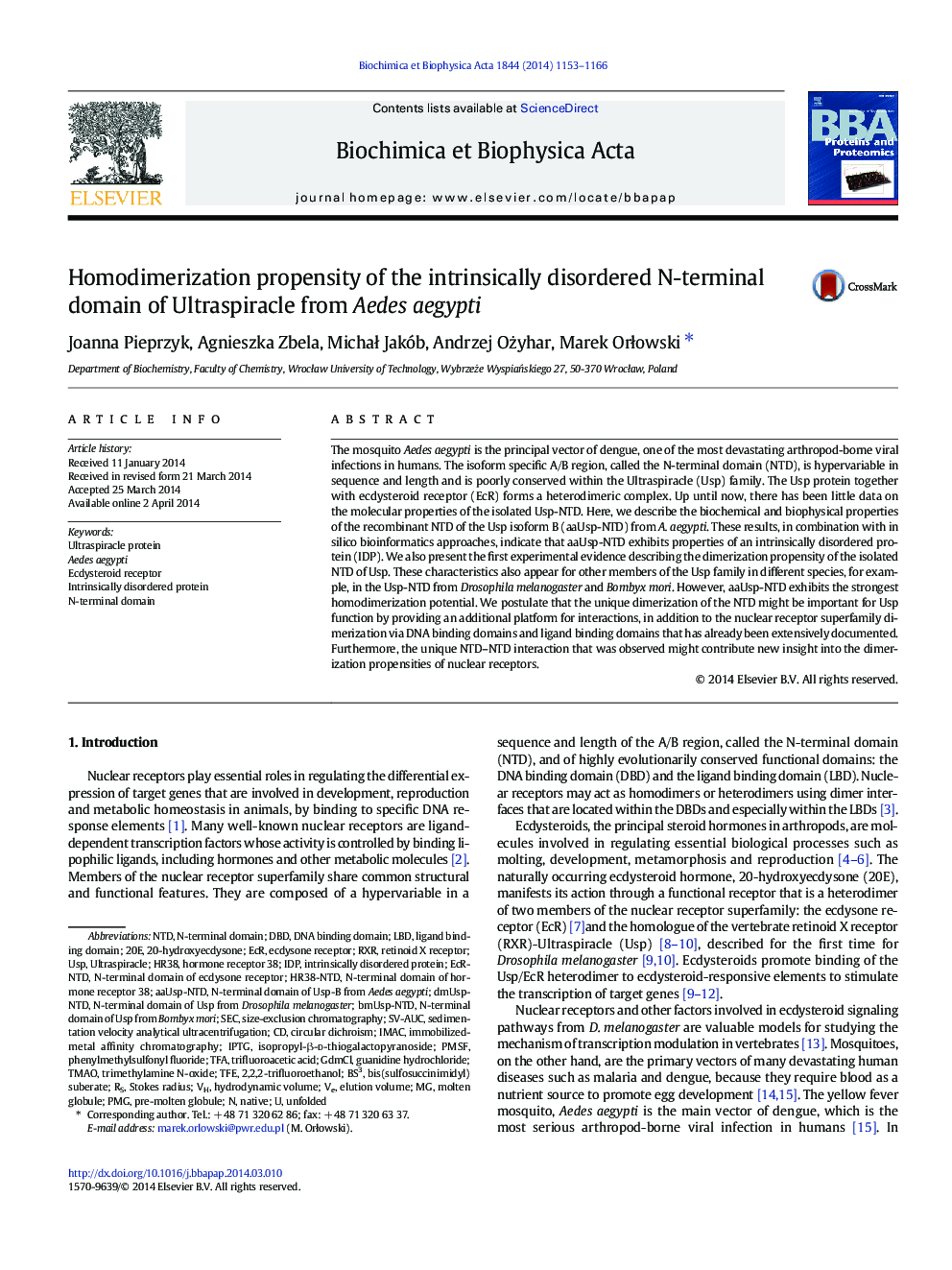| Article ID | Journal | Published Year | Pages | File Type |
|---|---|---|---|---|
| 1179629 | Biochimica et Biophysica Acta (BBA) - Proteins and Proteomics | 2014 | 14 Pages |
•We describe the biochemical and biophysical properties of aaUsp-NTD.•aaUsp-NTD exhibits properties of an intrinsically disordered protein (IDP).•aaUsp-NTD has a tendency to dimerization.
The mosquito Aedes aegypti is the principal vector of dengue, one of the most devastating arthropod-borne viral infections in humans. The isoform specific A/B region, called the N-terminal domain (NTD), is hypervariable in sequence and length and is poorly conserved within the Ultraspiracle (Usp) family. The Usp protein together with ecdysteroid receptor (EcR) forms a heterodimeric complex. Up until now, there has been little data on the molecular properties of the isolated Usp-NTD. Here, we describe the biochemical and biophysical properties of the recombinant NTD of the Usp isoform B (aaUsp-NTD) from A. aegypti. These results, in combination with in silico bioinformatics approaches, indicate that aaUsp-NTD exhibits properties of an intrinsically disordered protein (IDP). We also present the first experimental evidence describing the dimerization propensity of the isolated NTD of Usp. These characteristics also appear for other members of the Usp family in different species, for example, in the Usp-NTD from Drosophila melanogaster and Bombyx mori. However, aaUsp-NTD exhibits the strongest homodimerization potential. We postulate that the unique dimerization of the NTD might be important for Usp function by providing an additional platform for interactions, in addition to the nuclear receptor superfamily dimerization via DNA binding domains and ligand binding domains that has already been extensively documented. Furthermore, the unique NTD–NTD interaction that was observed might contribute new insight into the dimerization propensities of nuclear receptors.
